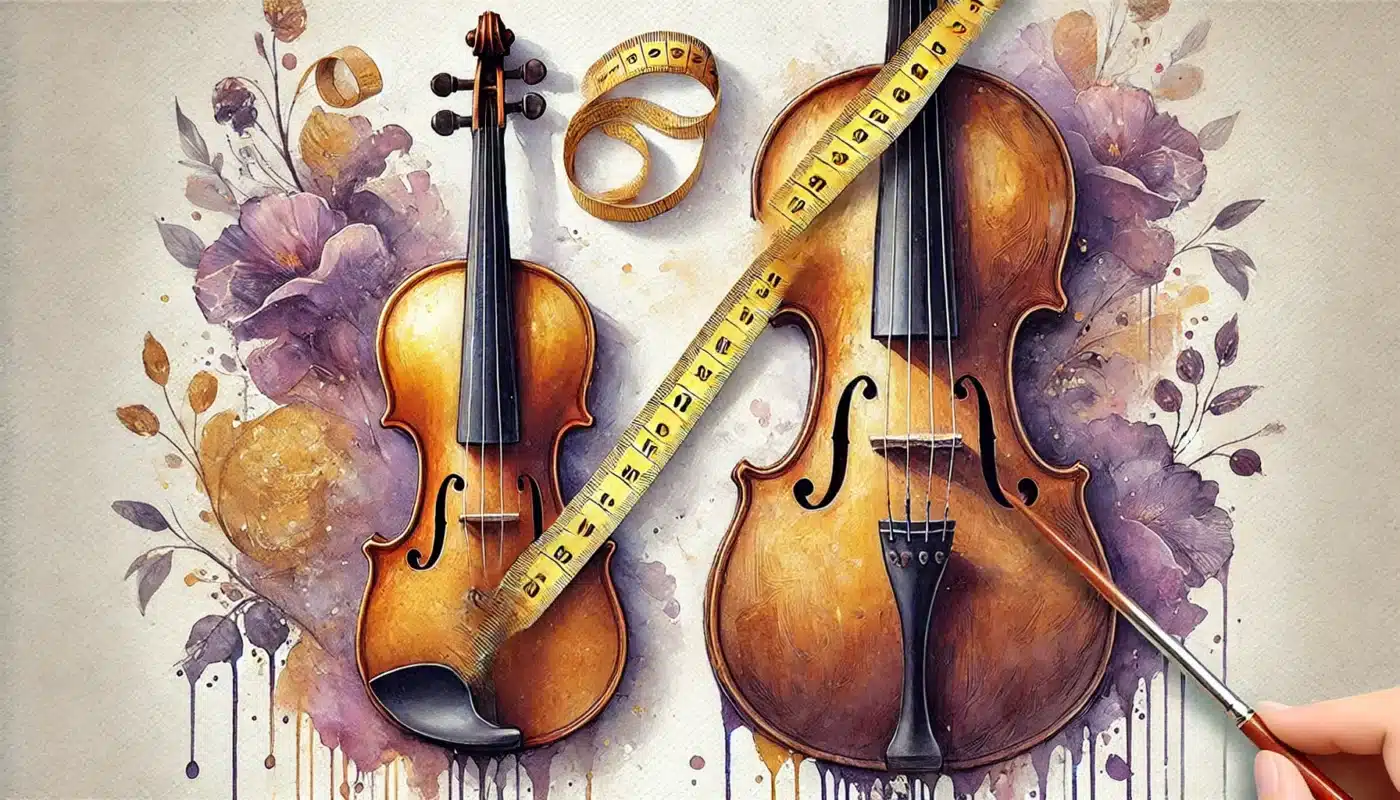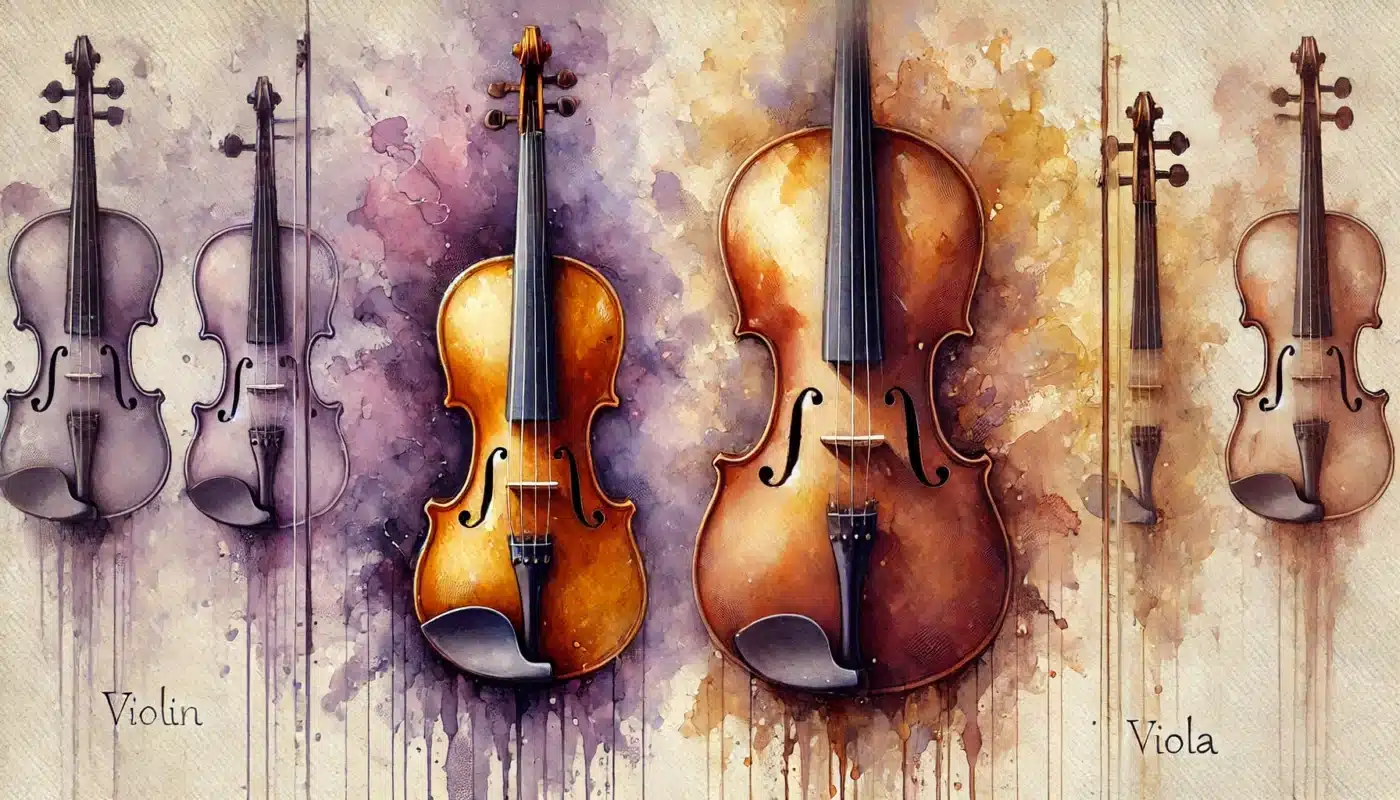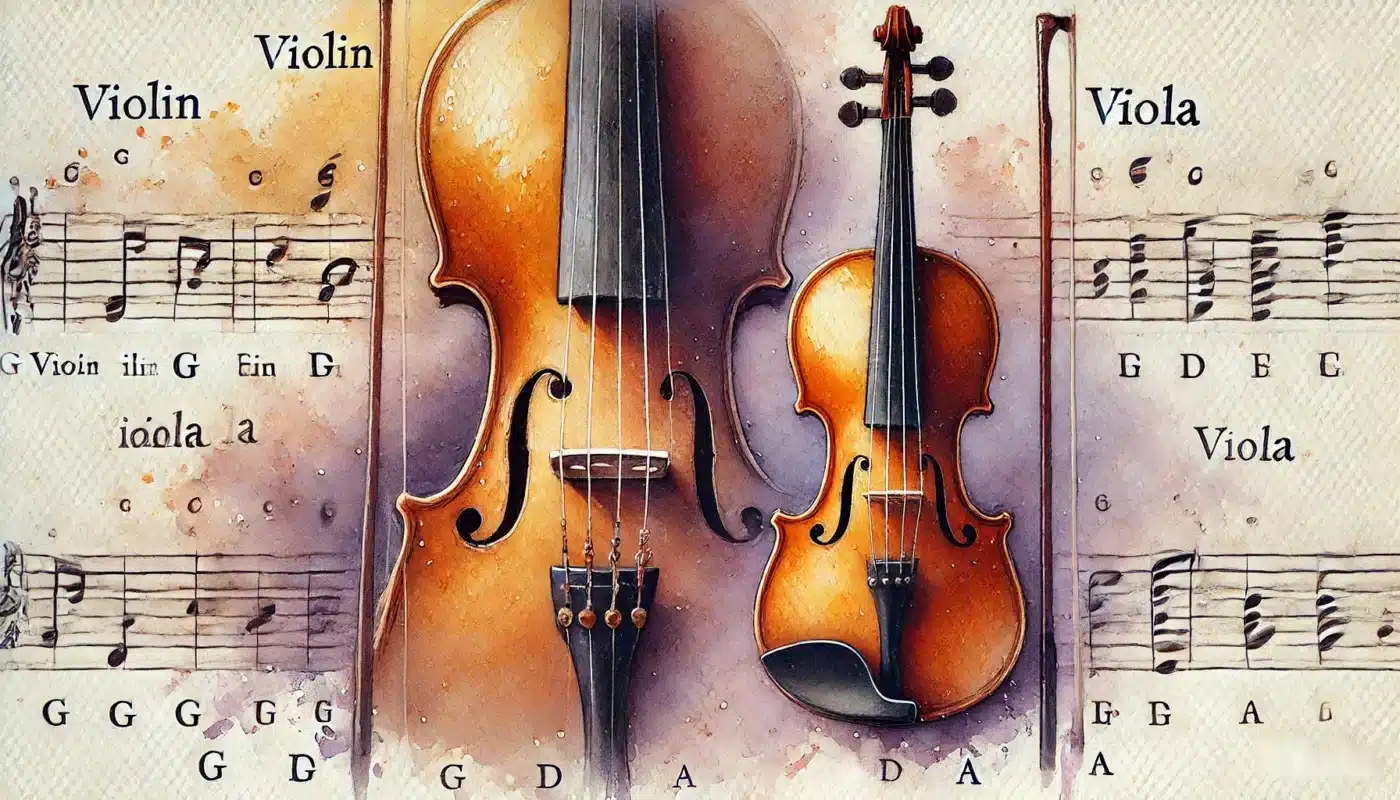Introduction
At first glance, the violin and viola look remarkably similar. Both are classic string instruments held under the chin, played with a bow, and feature elegant, curvaceous bodies. However, if you’ve ever wondered what sets them apart beyond their size, you’re in the right place. Understanding the anatomical differences between the violin and viola can deepen your appreciation for each instrument and help you decide which one might be the perfect fit for you.
Size and Physical Dimensions

Body Size
One of the most noticeable differences is size. The viola is generally larger than the violin.
- Violin: Typically measures about 35.5 cm (14 inches) in body length.
- Viola: Varies in size but usually ranges from 38 cm to 43 cm (15 to 17 inches).
The larger body of the viola contributes to its deeper, richer sound but can also make it slightly more challenging to handle, especially for younger players or those with smaller hands.
Neck and Fingerboard
- Viola: Has a slightly longer and thicker neck to accommodate its larger body and string length.
- Violin: Features a slimmer neck, making it easier to navigate for faster passages.
These differences affect hand positioning and can influence the overall playing experience.
If you’re considering which instrument might be right for you, understanding these differences is a great first step. For a deeper dive into choosing between the violin and viola, check out our detailed comparison: Viola vs Violin: Which Instrument Is Right for You?
Tuning and Strings

String Count
Both instruments have four strings, but they are tuned differently.
Tuning Differences
- Violin Strings (from lowest to highest): G, D, A, E.
- Viola Strings (from lowest to highest): C, G, D, A.
The viola’s strings are tuned a fifth lower than the violin’s, giving it a deeper sound.
String Thickness
- Viola Strings: Thicker and longer, contributing to a richer, more mellow tone.
- Violin Strings: Thinner, which allows for a brighter and more penetrating sound.
Bow Differences
Bow Size and Weight
While similar in appearance, the bows used for each instrument have subtle differences.
- Viola Bow: Slightly heavier and longer, typically around 74 cm in length.
- Violin Bow: Slightly lighter and shorter, usually about 73 cm long.
The extra weight of the viola bow helps produce a fuller sound from the thicker strings.
Bow Frog Shape
The frog is the part of the bow held by the player.
- Viola Bow Frog: Often has a curved or more rounded edge.
- Violin Bow Frog: Usually features a pointed or angular edge.
These differences are subtle but can affect the balance and feel of the bow in your hand.
Clef and Notation

Violin Uses Treble Clef
The violin reads music written in the treble clef, which is familiar to many musicians and is often used for higher-pitched instruments.
Viola Uses Alto Clef
The viola primarily uses the alto clef, also known as the C clef.
- This clef centres on middle C, which suits the viola’s range perfectly.
- It’s less common than the treble clef, so it can be an adjustment for those new to it.
Understanding different clefs is essential for reading music accurately and can influence the learning curve for each instrument.
Sound and Tone Quality
Violin
- Produces a bright, brilliant sound.
- Excels in melodic, high-pitched passages.
- Often carries the melody in orchestral and chamber settings.
Viola
- Offers a warm, rich tone.
- Fills the middle harmonies between the violin and cello.
- Known for its deep, mellow sound that adds depth to musical pieces.
Playing Position and Technique
Instrument Position
While both are held under the chin, the viola’s larger size requires slight adjustments.
- Viola Players: May need to extend their left arm a bit more and adjust their elbow position to accommodate the instrument’s size.
- Violin Players: Benefit from a more compact reach, which can be comfortable for rapid finger movements.
Technique Adjustments
- Finger Spacing: Wider on the viola due to the longer fingerboard.
- Bow Pressure: Viola requires more pressure to produce a clear sound because of thicker strings.
- Hand Stretching: Viola playing can demand greater finger stretch, which may impact comfort and technique.
Conclusion
While the violin and viola share many similarities, their anatomical differences contribute to their unique sounds and playing experiences. The violin’s smaller size and higher pitch make it ideal for those drawn to bright melodies and agile playing. The viola’s larger build and deeper tones offer a rich, expressive range that resonates with those who appreciate its warm sound.

